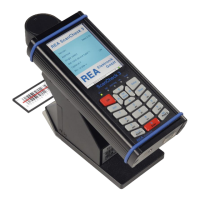Automation
Electronic Devices and Systems
4.6.3.3.2 The GS1 DataBar Code Family
4.6.3.3.3 RSS / GS1 DataBar Code - Additional Verification Criteria
The GS1 DataBar Code (previously called RSS Code) is a new
code symbology. It was developed between 1995 and 2000. In
contrast to the previously disseminated code types, whole data
words are encrypted in GS1 DataBar Codes and not just
encrypted character for character in the bar code symbols. For
that reason there is no longer any option to decrypt the respective
character content from the individual code words. This type of
encryption is more efficient than the classical linear bar code types
and leads to smaller space requirements for the depiction of code
characters.
RSS is the abbreviation for the description "Reduced Space
Symbology." Due to the possible mix-up of the name with
"RSS feeds" - known from the Internet - GS1 decided to change
the name to GS1 DataBar.
The variant GS1 DataBar Expanded offers the greatest possible
flexibility of this code type. The GS1-128 data structures known
from the Code 128 can be completely encrypted in the same manner. Exactly as in Code 128,
however, other data structures can also be encrypted in GS1 DataBar Expanded (or RSS Expanded).
For that reason there is a settings menu in which the verification of the GS1 128 data structure can be
activated or deactivated.
4.6.3.3.4 The Code 39 Family
4.6.3.3.5 Code 39 - Additional Verification Criteria
Code 39 is an old symbology with which up to 43 diferent characters can be encrypted.
It requires comparably as much space for this. It continues to be used in many applications in
the industrial field.
With the selection of the ANSI function, the verification of the ratio between narrow and wide code
elements is converted from the ratio values specified by the ISO standard to the values specified in the
ANSI standard. ANSI allows a ratio from 1:2.5 to 1:3.0 if the module width equals less than 0.5 mm.
The ISO standard always allows a ratio between 1:2.0 and 1:3.0.
Upon activation of the verification character function, a verification character verification is made on
standard code 39. The verification character can be thereby verified according to Modulo 10 or Modulo
43. If this function is not activated, no verification character verification is made.
If the UPU or HIBC functions were activated, deactivation of the verification character function has no
meaning because a verification character control is always specified and contained in these code
types.

